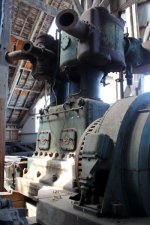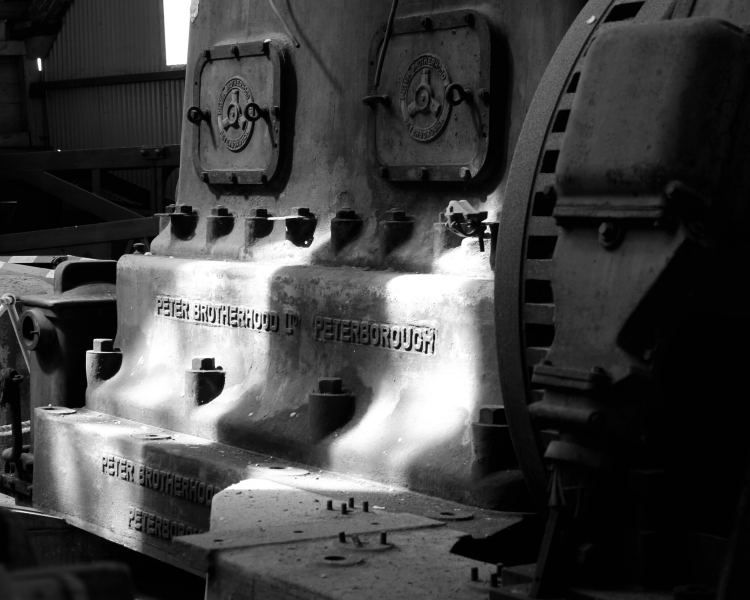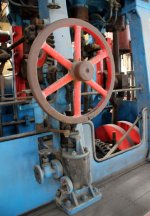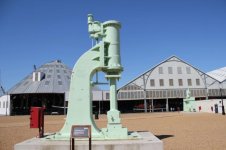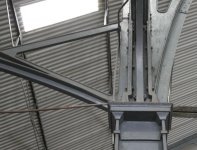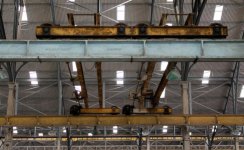Xunil
Despite its diminished size. We managed to spend the whole day there. Even so, I now know we missed some things, including the former Marc Brunel-designed sawmill. We had a bit of a drive round the area afterwards, and only now, having read up about the place, do I realise that the nearby marina's basins were originally part of the naval dockyard.
Richard,
You are undoubtedly right about the planer having a leadscrew-driven table. Just inboard of the leadscrew’s bevel will be a multi-collar thrust bearing. A similar arrangement can be seen in the photos of this Whitworth planer:-
http://www.practicalmachinist.com/vb/antique-machinery-history/whitworth-planer-210742/
Unfortunately, I only took quick snapshots of the contents of this shed, and the photos aren’t very good. I will show some more, for what they’re worth.

16
The next two show a steam turbine from a 'Blackwood' class frigate. I gather that these were a cheap and cheerful sort of vessel, although I suppose 'cheap' is a relative term in Admiralty speak.
The English Electric-designed turbines gave 15,000 HP going forwards, 5000 HP astern. That astern power would be useful when slowing and manoeuvring when dicing with submarines.
I think there were two turbines, driving into one gearbox. In the photos, the red valve atop the casing is to admit astern steam, the blue for ahead. There are several ahead valves in the 'blue' group, opening progressively to admit steam to individual groups of nozzles, this arrangement giving more economical cruising.

17
All the astern power comes from just two rows of blades, seen on the left in photo #17. These exhaust into the condenser, which is immediately below the turbine casing.
 1
1  2
2  3
3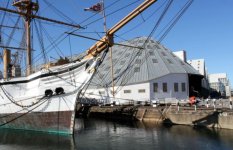 4
4


